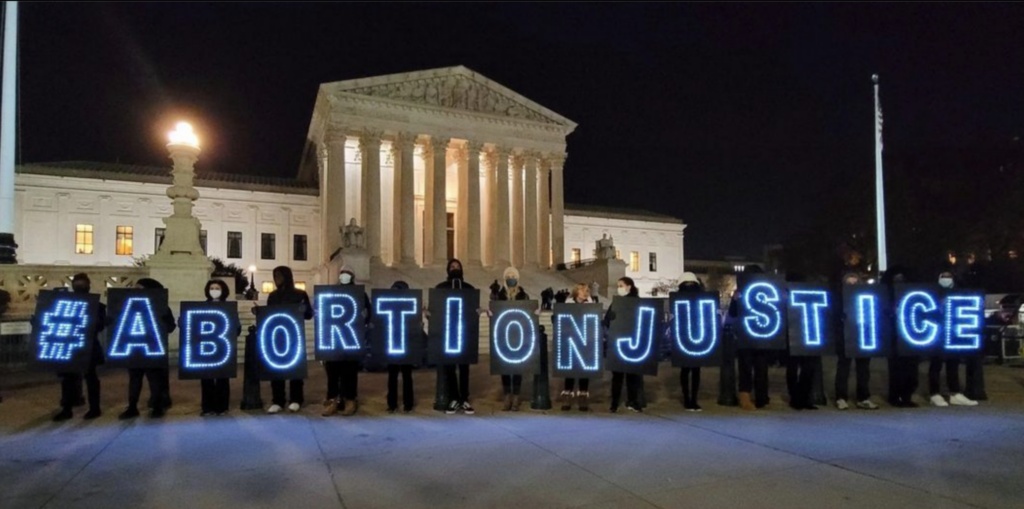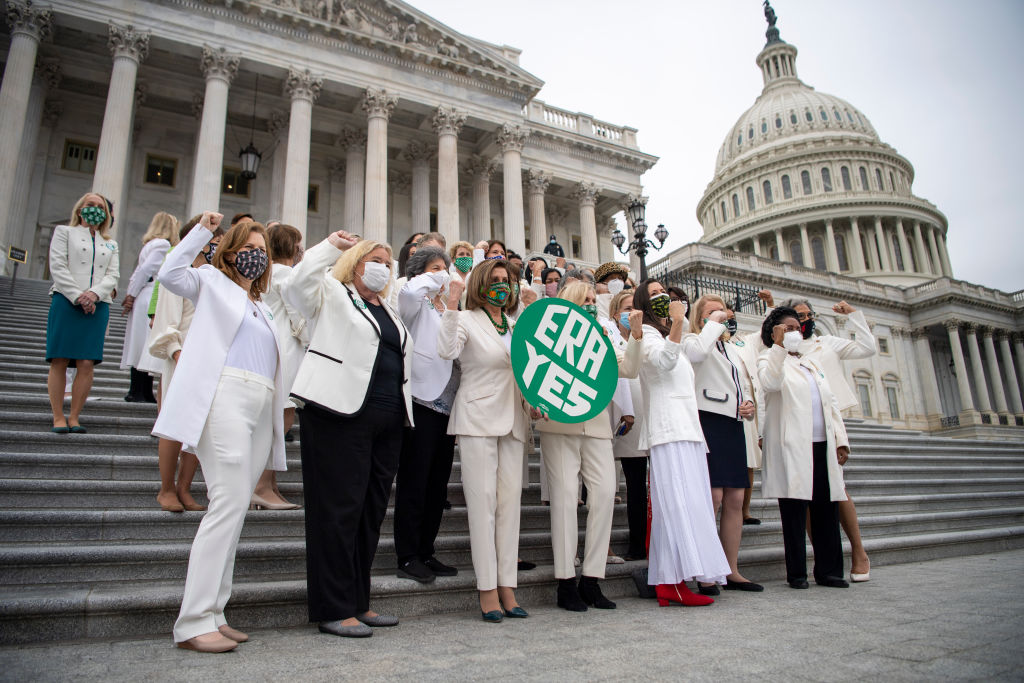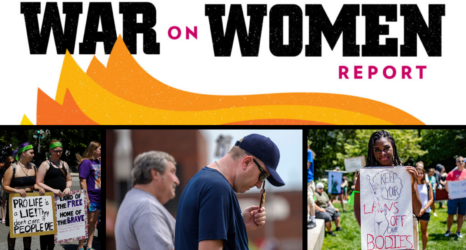Reproductive rights are in grave danger—but the Equal Rights Amendment could change things.

The U.S. legal and political tradition has a long history of failing to recognize women’s claims to autonomy as individuals possessing citizenship rights equal to those of men. From Revolutionary-era republicanism through 19th-century democracy, the principle of consent of the governed did not include women as full rights-bearing citizens.
Even now, over a century after ratification of the 19th Amendment in 1920 removed sex as a permissible barrier to the right to vote, the debate continues—this time in the context of Dobbs v. Jackson Women’s Health Organization, a case currently before the Supreme Court. By June, the Dobbs decision could open the floodgates for a significant increase in restrictions on women’s reproductive autonomy.
Current judicial precedent, based on Roe v. Wade (1973) and Planned Parenthood v. Casey (1992), gives a woman the right to determine whether or not to continue a pregnancy until about 24 weeks of gestation, when the fetus is able to survive outside the womb. The Mississippi law in Dobbs would limit the window to 15 weeks before government restrictions on abortion accessibility would override her decision, while an egregious Texas ban on abortion after six weeks of pregnancy, with no exceptions for rape or incest, has been allowed by the Supreme Court to remain in effect while litigation against it works its way through the courts.
Women have never legally had full reproductive autonomy, but two centuries ago the law gave them more latitude to decide whether or not to terminate an early pregnancy than would be possible in the 21st century under either the Mississippi or the Texas law.
The common law tradition that underpinned the early U.S. legal system permitted abortions before “quickening,” usually about four months after conception, when a person could feel a fetus move inside their body. Before this time, the fetus had no existence in a legal sense, and “releasing a blocked menstrual cycle” or terminating a pregnancy in some other way was legal with a woman’s consent.
Ironically, married women also lacked a separate legal existence under the common law tradition. Under the doctrine known as coverture, a married woman had no legal existence separate from her husband’s status, and her independent identity was profoundly limited by his right to hold authority and dominion over her. He had a right not only to her free domestic labor, but also to the sexual services of her body—a reason why U.S. law did not recognize rape within marriage as a crime until the 1970s.
Thus, the notion of the self-governing individual wrapped in the original masculine conception of full rights-bearing citizenship implicitly excluded all women, because the old law of domestic relations had denied women the ability to have full command and authority over their own bodies and lives. Despite reforms beginning in the mid-1800s to reduce legal restrictions on women, significant differences between men’s and women’s rights regarding property, earnings, contracting, inheritance, guardianship, domicile and nationality status continued well into the 20th century.
Still-living legacies fuel legislative and judicial efforts to turn back the clock on women’s progress toward equal citizenship and full autonomy.
Even as women’s public presence and influence grew throughout the 19th century, government actions began to harden against what had been a fairly common practice by many women to obtain abortion services before quickening. The trend toward restricting access to abortions intensified as the century progressed, and by 1900 laws criminalizing abortion existed in every state except Kentucky, where state courts had outlawed the practice.
The dual influences of women’s subservient legal position under coverture and the criminalization of abortion in the 19th century underlie the deep tendency within the U.S. legal tradition to restrict women’s ability to control their own bodies and lives. These still-living legacies fuel legislative and judicial efforts to turn back the clock on women’s progress toward equal citizenship and full autonomy.

In a 1985 article in the North Carolina Law Review, Ruth Bader Ginsburg expressed the issue very clearly:
“The conflict … is not simply one between a fetus’s interests and a woman’s interests, narrowly conceived, nor is the overriding issue state versus private control of a woman’s body for a span of nine months. Also in the balance is a woman’s autonomous charge of her full life’s course … her ability to stand in relation to man, society, and the state as an independent, self-sustaining, equal citizen.”
The increasing efforts of a number of politicians and jurists to dismiss women’s claim to equal citizenship rights, particularly with respect to issues of reproduction, also demonstrate the continued relevance of and need for the Equal Rights Amendment (ERA).
Fifty years after Congress passed the amendment and sent it to the states for approval on March 22, 1972, the ERA has now achieved the necessary 38 state ratifications required for inclusion in the Constitution. Confirmation of its ratification through publication in the federal register by the archivist of the U.S. is pending while Congress and the courts deal with pertinent, but not requisite, legislation and litigation.
When the ERA—“Equality of rights under the law shall not be denied or abridged by the United States or by any state on account of sex”—is affirmed as the 28th Amendment to the Constitution, women will for the first time have equal citizenship rights with men. With gendered citizenship no longer an operative legal principle, the ERA will be a powerful legal tool to shore up existing rights for women, secure still-elusive ones and silence the final reverberations of coverture.
Sign and share Ms.’s relaunched “We Have Had Abortions” petition—whether you yourself have had an abortion, or simply stand in solidarity with those who have—to let the Supreme Court, Congress and the White House know: We will not give up the right to safe, legal, accessible abortion.
Up next:





